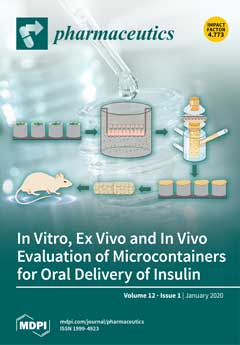Inhalation therapy with a nebulizer is widely used in chronic respiratory disease. Mixing inhalation solutions/suspensions for simultaneous inhalation is more convenient and might simplify the administration procedure. However, there are no data available to address the in vitro aerosol characteristics and physico-chemical compatibility of Combivent
® (containing Salbutamol and Ipratropium bromide) with other inhalation solutions/suspensions. In order to investigate the in vitro aerosol characteristics and physico-chemical compatibility of Combivent
® with Budesonide, Beclomethasone, and
N-acetylcysteine, the appearance, pH, osmotic pressure, chemical stability, mass median aerodynamic diameter (MMAD), fine particles fraction (FPF), particle size corresponding to X50 (particle size, which accounts for 50% of the total cumulative percentage of volume of all particles), delivery rate, and total delivery of the mixed inhalation solution/suspension were tested. There was no change in the appearance such as a change in color or precipitation formation at room temperature. The pH, osmolality, and chemicals of the mixtures were stable for 24 h after mixing. There were no significant differences between Combivent
®, Budesonide, Beclomethasone,
N-acetylcysteine, and the mixtures in MMAD, FPF, X50, the delivery rate, and the total delivery. This indicates that the mixtures were physically and chemically compatible. The mixing did not influence the particle size, distribution, or delivery compatibility of the mixtures.
Full article






